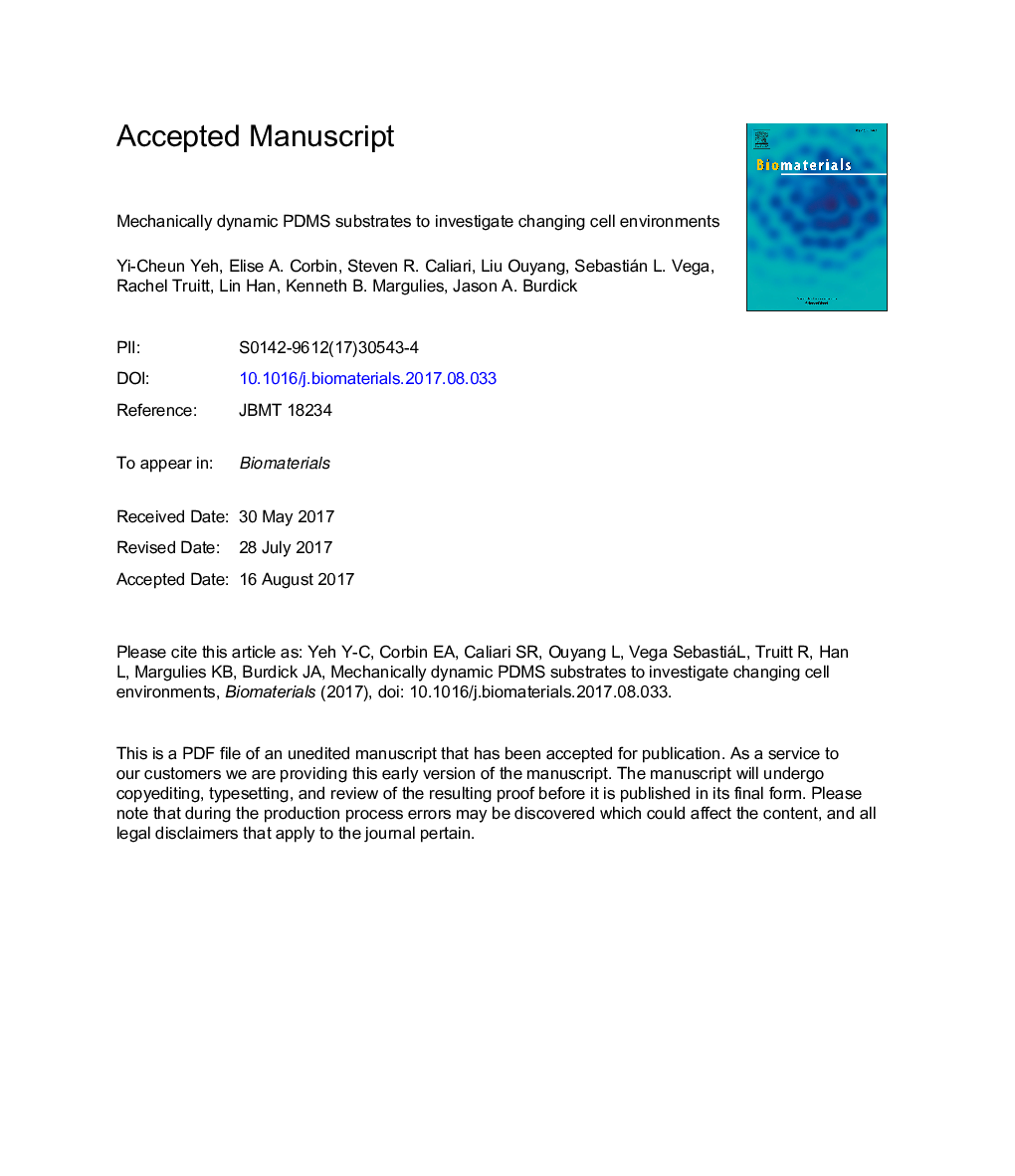| Article ID | Journal | Published Year | Pages | File Type |
|---|---|---|---|---|
| 6450503 | Biomaterials | 2017 | 28 Pages |
Abstract
Mechanics of the extracellular matrix (ECM) play a pivotal role in governing cell behavior, such as cell spreading and differentiation. ECM mechanics have been recapitulated primarily in elastic hydrogels, including with dynamic properties to mimic complex behaviors (e.g., fibrosis); however, these dynamic hydrogels fail to introduce the viscoelastic nature of many tissues. Here, we developed a two-step crosslinking strategy to first form (via platinum-catalyzed crosslinking) networks of polydimethylsiloxane (PDMS) and then to increase PDMS crosslinking (via thiol-ene click reaction) in a temporally-controlled manner. This photoinitiated reaction increased the compressive modulus of PDMS up to 10-fold within minutes and was conducted under cytocompatible conditions. With stiffening, cells displayed increased spreading, changing from â¼1300 to 1900 μm2 and from â¼2700 to 4600 μm2 for fibroblasts and mesenchymal stem cells, respectively. In addition, higher myofibroblast activation (from â¼2 to 20%) for cardiac fibroblasts was observed with increasing PDMS substrate stiffness. These results indicate a cellular response to changes in PDMS substrate mechanics, along with a demonstration of a mechanically dynamic and photoresponsive PDMS substrate platform to model the dynamic behavior of ECM.
Related Topics
Physical Sciences and Engineering
Chemical Engineering
Bioengineering
Authors
Yi-Cheun Yeh, Elise A. Corbin, Steven R. Caliari, Liu Ouyang, Sebastián L. Vega, Rachel Truitt, Lin Han, Kenneth B. Margulies, Jason A. Burdick,
